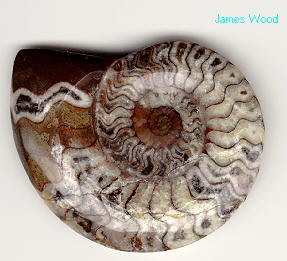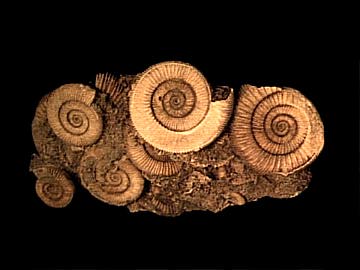The most abundant and well known of all ammonoids are the 'ammonites' meaning the "horn of Amen". Ammonoid shells are typically tightly coiled in a planispiral fashion, in which the earliest-formed part is a small bulbous protoconch. The outer surface of shell is usually marked by faint growth lines, but in addition there are usually ribs, radially arranged. Particular kinds of sutures characterise distinct ammonoid families and are useful in classification and identification. The goniatites are Paleozoic ammonoids with sharply angular and generally zigzag sutures, while the ammonites have complex sutures.
The life habits of ammonoids are much in debate. Some believe that after an initially planktonic stage, the juveniles became benthic and crawled about on their arms like octopi.(Ebel, 1990) The ammonoids became extinct in the Cretaceous.
 |
 |
| Figure 20: A goniatite, an early offshoot from the ammonoid lineage. It has relatively simple sutures compared with an ammonite. | Figure 21: A collection of ammonite shells. Note the simple sutures. |


